UPSC Daily Current Affairs- 25th June 2024 | Current Affairs & Hindu Analysis: Daily, Weekly & Monthly PDF Download
GS1/History & Culture
Srinagar Gets Tag of World Craft City
Source: Indian Express
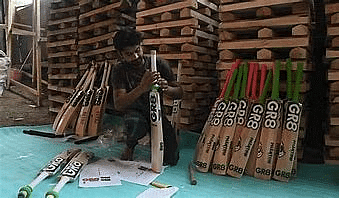
Why in news?
Srinagar has become the fourth Indian city to be recognized as a ‘World Craft City’ by the World Craft Council (WCC), following its designation as part of the UNESCO Creative City Network (UCCN) for crafts and folk arts three years ago.
- Jaipur, Malappuram, and Mysore are the other Indian cities that have previously been recognized as World Craft Cities.
About
- WCC is a non-profit, non-governmental organization affiliated with UNESCO. Established in 1964, it aims to promote the preservation, protection, and development of traditional crafts and foster economic development through crafts.
World Craft City Recognition by WCC
- World Craft City recognition by the WCC is an esteemed designation given to cities that excel in the promotion and development of traditional crafts and artisanship. This recognition acknowledges the city's commitment to preserving and promoting its unique craft heritage and supporting local artisans.
Significance of World Craft City Recognition
- International Prestige: The recognition elevates the city's status on a global platform, enhancing its reputation as a center of excellence for crafts.
- Economic Benefits: This designation can boost the local economy by attracting tourists, investors, and buyers interested in authentic crafts, thereby increasing market opportunities for artisans.
- Cultural Preservation: It highlights the city's dedication to preserving traditional crafts, ensuring that these cultural practices are passed down to future generations.
- Support for Artisans: The recognition often leads to increased support for local artisans, including funding, training, and opportunities for international collaboration and exchange.
- Promotion of Innovation: It encourages innovation within the craft sector by blending traditional techniques with modern designs, fostering creativity and sustainability.
- Enhanced Visibility: The city and its crafts receive greater visibility through international media coverage, exhibitions, and events associated with the WCC.
Criteria for Recognition
- A rich tradition of crafts and a significant population of skilled artisans.
- Active promotion and development of craft traditions.
- Commitment to preserving cultural heritage & supporting sustainable practices.
- Evidence of innovation and creativity in craft practices.
- Strong community involvement and support for the craft sector.
UNESCO’s Creative Cities Network (UCCN)
The UCCN was created in 2004 to promote cooperation among cities that have identified creativity as a strategic factor for sustainable urban development. It now includes 350 cities in over a hundred countries. It was launched to promote UNESCO’s goals of cultural diversity and strengthen resilience to threats such as climate change, rising inequality, and rapid urbanization.
Aim
- The network is aimed at leveraging the creative, social, and economic potential of cultural industries. It encourages a culture of creativity in urban planning and solutions to urban problems.
Objective of the CCCN
- It allows member cities to recognize creativity as an essential component of urban development, notably through partnerships involving the public and private sectors and civil society.
- It envisages to develop hubs of creativity and innovation and broaden opportunities for creators and professionals in the cultural sector.
- These cities have to achieve the UN agenda of sustainable development.
Areas of action
- The objectives of the network are implemented both at the level of the member cities and at the international level, notably through sharing experiences, knowledge and best practices.
- There are professional and artistic exchange programs, research and evaluations on the experience of the creative cities, among other activities.
The annual conference of network cities
- A highlight of the network is the annual conference of mayors and other stakeholders of network cities.
- This offers a unique occasion to strengthen ties between creative cities from across the world.
- The last conference was held in Santos, Brazil, and this year’s conference was in Istanbul. The next conference will be held in July 2024 in Braga, Portugal.
Responsibilities of members
- Every four years, member cities are required to submit a Membership Monitoring Report.
- This report is presented with an aim of demonstrating their steadfast commitment towards the implementation of the UCCN Mission Statement.
- They present an action plan for the following four years, providing insights into their achievements and lessons learnt, as well as the impact of the designation.
Indian cities in the network
- Apart from Kozhikode, Gwalior, Varanasi (music), (crafts and folk arts) and Chennai (music) are part of the network.
GS3/Economy
Government Offers Ten New Critical Mineral Blocks
Source: Indian Express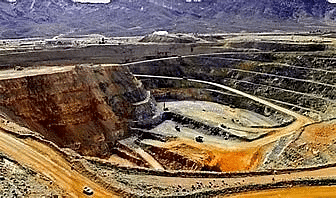
Why in the News?
The Ministry of Mines launched the fourth tranche of critical minerals auction, offering a total of 21 blocks across 14 states.
About Critical Minerals (Meaning, Characteristics, Examples, Reserves, etc.)
- Critical minerals are raw materials essential for economic and national security, often used in high-tech industries and renewable energy technologies.
- They are typically rare, difficult to mine and substitute, and often vulnerable to supply chain disruptions due to limited global production and geopolitical factors.
- The growing demand for these minerals, driven by technological advancements and the global transition to green energy, underscores their critical importance.
Characteristics of Critical Minerals:
- Economic Importance: Critical minerals are indispensable for the production of high-tech devices, electric vehicles (EVs), energy storage systems, and other key industries.
- Supply Chain Vulnerability: The supply of these minerals is often concentrated in a few countries, making them susceptible to geopolitical tensions, trade disputes, and other disruptions.
- Limited Substitutability: These minerals typically have few or no viable substitutes, which means that any disruption in their supply can have significant economic and technological impacts.
Examples of Critical Minerals:
- Lithium: Used in lithium-ion batteries for EVs, consumer electronics, and energy storage systems.
- Cobalt: Essential for battery production, aerospace components, and other high-strength alloys.
- Graphite: Key for batteries, fuel cells, and high-temperature applications.
- Nickel: Important for stainless steel production and battery manufacturing.
- Rare Earth Elements (REEs): Vital for manufacturing electronics, magnets, and military applications.
Critical Minerals Reserves in the World & India:
- India does not have reserves of nickel, cobalt, molybdenum, rare earth elements, neodymium, and indium.
- India's requirement of copper and silver are higher than its current reserves.
India's Critical Minerals Policy:
- India is bolstering its position in the global supply chain of critical minerals like lithium and cobalt through domestic exploration and international partnerships.
- The Ministry of Mines, in collaboration with the joint venture Khanij Bidesh India Ltd. (KABIL), is acquiring critical mineral assets in Australia, Argentina, and Chile to ensure a steady supply.
- India has joined the U.S.-led Mineral Security Partnership to enhance cooperation and investment in critical mineral supply chains.
- The MMDR Amendment Act, 2023, empowers the Central Government to auction mining leases and licenses for 24 critical minerals, promoting self-sufficiency and advancing sectors like high-tech electronics, telecommunications, and renewable energy.
Government Offers Ten New Critical Mineral Blocks
- The Ministry of Mines launched the fourth tranche of critical minerals auction, offering 21 blocks across 14 states.
- To incentivize exploration, the ministry announced a scheme to reimburse up to Rs 20 crore in exploration expenses for license holders.
- The fourth tranche brings the total number of critical mineral blocks offered to 48.
- The auction history has seen mixed results: out of 48 blocks, 24 have been annulled due to low bidder interest.
GS3/Environment
What is in Great Nicobar, site of NITI Aayog's mega Island Project?
Source: The Hindu

Why in News?
The opposition party has demanded the immediate suspension of all clearances granted to NITI Aayog's Great Nicobar Island (GNI) Project. It alleged violations of due process, legal and constitutional provisions protecting tribal communities.
Great Nicobar Island: An Overview
Geography and Ecology
- Southernmost tip of India, part of the Andaman and Nicobar archipelago comprising 600-odd islands.
Environment
- Hilly, covered with lush rainforests, annual rainfall of around 3,500 mm.
Biodiversity
- Hosts numerous endangered and endemic species including the giant leatherback turtle, Nicobar megapode, Great Nicobar crake, Nicobar crab-eating macaque, and Nicobar tree shrew.
Area
- 910 sq km with mangroves and Pandan forests along the coast.
Indigenous Communities
- Shompen Tribe: Approximately 250 people live in interior forests, predominantly hunter-gatherers, classified as a Particularly Vulnerable Tribal Group.
- Nicobarese Community: Two groups - Great Nicobarese and Little Nicobarese, practice farming and fishing.
Resettlement
- The Great Nicobarese were resettled in Campbell Bay after the 2004 tsunami.
Administrative Hub
- Campbell Bay serves as the administrative hub, housing local offices of the Andaman and Nicobar administration and the panchayat.
Back2Basics
- "Nicobar Triangle" is named after the Nicobar Islands, which are located at the northern apex of this triangular area.
What is GNI Project?
The GNI Project refers to the "Holistic Development of Great Nicobar Island," a proposed mega project being piloted by NITI Aayog.
Implementing Agency
- The project is to be implemented by the Andaman and Nicobar Islands Integrated Development Corporation (ANIIDCO).
Historical Context
- Development plans for a port in Great Nicobar date back to the 1970s, aimed at leveraging its strategic location near the Malacca Strait.
Features of the Project
Transshipment hub of the East
- The proposed port will allow Great Nicobar to participate in the regional and global maritime economy by becoming a major player in cargo transshipment.
Naval control
- The port will be controlled by the Indian Navy, while the airport will have dual military-civilian functions and will cater to tourism as well.
Urban amenities
- Roads, public transport, water supply and waste management facilities, and several hotels have been planned to cater to tourists.
Significance of the project
Economic significance
- The proposed port would allow GNI to become a significant player in cargo transhipment, as it is positioned equidistant from Colombo, Port Klang (Malaysia), and Singapore.
Strategic significance
- The proposal to develop GNI has been on the table since the 1970s, and it has been highlighted repeatedly as a crucial element for national security and consolidation of the Indian Ocean Region. In recent years, the escalating Chinese presence in the Indian Ocean has added greater urgency to this imperative.
Issues with the Project
- The project entails the deforestation of 130 sq km, and felling 10 lakh trees, threatens biodiversity at Galathea Bay, displaces indigenous tribes, lacks thorough impact assessments, and poses seismic risks to vulnerable communities.
Due-process Violations highlighted by the 'Opposition'
- Did not recognise the grant ownership: The island administration did not recognise or grant ownership of any forest land to local tribespeople as per FRA, a requisite step under the Forest Conservation Rules, 2017, before Stage-I clearance is granted.
- Inconsistencies with Stage-I Clearance: The Stage-I clearance for the project was granted in October 2022, two years after the application was received. Monthly progress reports show that the district administration did not process any claims over forest land under the FRA in the 26 months since project sanction.
- Withdrawal of Consent: Weeks after the Stage-I clearance was granted, the Tribal Council at Campbell Bay withdrew the consent granted by the Gram Sabha.
GS2/Governance
Centre amends Maternity Leave Rules for Surrogacy
Source: First Post
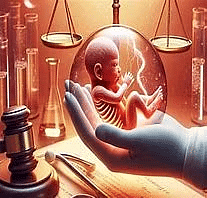
Why in news?
The Centre has notified amended rules allowing women government employees to take 180 days of maternity leave for children born through surrogacy. Changes are introduced in the Central Civil Services (Leave) Rules, 1972. There were previously no rules granting maternity leave to women government employees for children born through surrogacy.
Back2Basics: Surrogacy (Regulation) Act, 2021
- Purpose: The Act aims to regulate surrogacy in India by prohibiting commercial surrogacy and allowing only altruistic surrogacy.
- Eligibility Criteria:
- Only Indian couples who have been legally married for at least five years can opt for surrogacy.
- The woman must be between 25 to 50 years old, and the man must be between 26 to 55 years old.
- Both partners must not have any living biological, adopted, or surrogate children.
- Surrogate Mother Criteria:
- The surrogate mother must be a close relative of the intending couple.
- She should be a married woman having her own child and must be 25 to 35 years old.
- Prohibitions: Commercial surrogacy is banned under this Act. Any form of payment to the surrogate mother beyond medical expenses and insurance coverage is prohibited.
- Penalties: Engaging in commercial surrogacy can lead to imprisonment up to 10 years and a fine up to Rs 10 lakhs.
- Regulatory Bodies: The Act establishes a National Surrogacy Board at the national level and State Surrogacy Boards at the state level to oversee the implementation of the law.
About the Central Civil Services (Leave) (Amendment) Rules, 2024
- Authority: President of India has made these amendments to the Central Civil Services (Leave) Rules, 1972.
- Features and Benefits:
- Surrogacy Inclusion: These amendments specifically address the needs of surrogacy, providing equitable maternity, paternity, and childcare leave benefits to government employees involved in surrogacy.
- Enhanced Leave Entitlements:
- Maternity Leave: 180 days for both the surrogate and the commissioning mother.
- Paternity Leave: 15 days for the commissioning father within six months of the child’s birth.
- Child Care Leave: Available to the commissioning mother. Female government servants and single male government servants are already allowed childcare leave for a maximum of 730 days (2 years!) during their entire service for the care of their two eldest surviving children.
- Flexibility and Inclusivity: The amendments aim to provide more flexible and inclusive leave options for government employees, recognizing diverse family structures and reproductive choices.
- Support for Families: These changes enhance support for government employees, ensuring they can adequately care for their children and family needs, especially in cases of surrogacy.
- Administrative Implementation: The rules simplify the process for applying for and approving leave, ensuring that employees can easily access their entitlements.
- Impact:
- Employee Well-being: Improved leave policies contribute to better work-life balance and overall well-being for government employees.
- Gender Equality: By providing paternity leave and child care leave in surrogacy cases, the rules promote gender equality and shared parenting responsibilities.
- Organizational Efficiency: Streamlined leave procedures and clear guidelines help maintain productivity and efficiency within government departments.
PYQ:
[2020] In the context of recent advances in human reproductive technology, “Pronuclear Transfer” is used for:
(a) fertilization of egg in vitro by the donor sperm
(b) genetic modification of sperm-producing cells
(c) development of stem cells into functional embryos
(d) prevention of mitochondrial diseases in offspring
GS2/International Relations
From China tilt to a balancing with Beijing and Delhi
Source: The Hindu
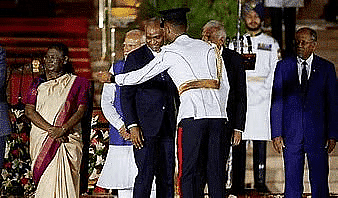
Why in news?
Amid mounting domestic and foreign policy challenges in Male, Mohamed Muizzu appears to be seeking reconciliation with India.
Economic Difficulties in Maldives
Debt Burden:
- Maldives faces severe economic strain with a debt-to-GDP ratio of 110% and significant debt servicing obligations, including around $512 million annually in 2024 and 2025.
Foreign Reserves:
- Foreign reserves are critically low at $622 million, insufficient to cover debt maturities and sustain imports amid rising inflation.
Dependence on Imports:
- Heavy reliance on imports for essential goods exacerbates economic vulnerabilities, particularly amidst food and fuel inflation.
Revenue Generation:
- The government struggles with low domestic revenue generation capacity, further complicating fiscal management and debt sustainability.
Diversification Efforts:
- Efforts to diversify economic partnerships beyond traditional allies like India and China reflect a strategy to mitigate economic dependencies and attract diverse investments.
What do the ties between India and China imply?
Geopolitical Competition:
- India and China’s engagements in countries like the Maldives reflect a broader competition for influence in the Indian Ocean region. Both countries strategically invest in infrastructure and security partnerships to enhance their regional foothold.
Economic Leverage:
- China’s substantial investments in the Maldives, including infrastructure projects under the Belt and Road Initiative (BRI), provide economic leverage but also raise concerns about debt sustainability and strategic dependencies.
Strategic Alignment:
- While India emphasizes developmental assistance and strategic partnerships focused on security and governance, China’s engagements often prioritize infrastructure development and economic cooperation, reflecting different strategic priorities.
Regional Stability:
- Both India and China play pivotal roles in ensuring stability and security in the Indian Ocean region. Their respective approaches influence regional dynamics and perceptions among neighbouring countries regarding economic partnerships and security alignments.
India’s stand
Balanced Approach:
- India continues to engage with the Maldives despite geopolitical shifts and maintains a stance of constructive diplomacy, offering economic support and emphasizing mutual respect.
Long-term Engagement:
- Inviting President Muizzu to Prime Minister Modi’s swearing-in signals India’s commitment to long-term bilateral relations and stability in the Indian Ocean region.
Strategic Importance:
- India views the Maldives as crucial for maritime security and regional stability, underpinning its continued diplomatic efforts and economic assistance.
Conclusion:
India can increase its economic assistance to the Maldives through grants, concessional loans, and capacity-building initiatives aimed at improving fiscal management and revenue generation capabilities. And focus on projects that enhance infrastructure resilience, promote sustainable development, and support economic diversification efforts beyond traditional sectors.
Mains PYQ:
Discuss the political developments in Maldives in the last two years. Should they be of any cause of concern to India? (UPSC IAS/2013)
GS2/Polity
How the PESA has boosted forest conservation in India
Source: The Hindu
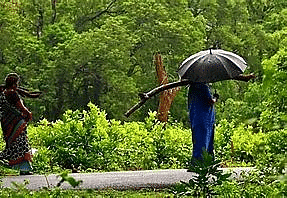
Why in news?
Conservation policies in India have long wrestled with dual conflicts: balancing conservation goals against local communities’ resource extraction needs, and reconciling conservation with the imperative of economic development.
Structural Mandate of Panchayat (Extension to Scheduled Areas) Act (PESA):
- PESA was passed in 1996 and it mandates local government councils in Scheduled Areas to reserve all chairperson positions and at least half of the seats for Scheduled Tribes (ST).
- This legislative framework is designed to empower marginalized communities by giving them a direct say in local governance and resource management.
Implementation in India:
- Unlike the 73rd Amendment (which applies to non-Scheduled Areas), PESA ensures mandated representation for STs in decision-making bodies.
- Variations in PESA implementation across states highlight challenges and successes in translating legislative intent into effective governance structures.
How it Ensures Equitable Representation:
- Impact on Forest Conservation: The study employs a “difference-in-differences” methodology to analyze the effect of PESA on forest cover. Findings indicate that areas with mandated ST representation under PESA experience lower rates of deforestation and higher afforestation rates compared to areas without such representation.
- Economic Incentives for Conservation: ST communities, dependent on forest resources for livelihoods, are incentivized to protect forest cover under PESA. This “forest stewardship” mechanism emerges as STs engage in sustainable practices and resist deforestation pressures driven by mining and commercial interests.
On Democratic Decentralization:
- Comparison with Administrative Decentralization: The paper distinguishes between administrative decentralization (focused on efficiency) and democratic decentralization. Democratic decentralization, as exemplified by PESA, emphasizes representative and accountable local governance structures with decision-making autonomy over resource management.
- Single Umbrella Institution: Advocates for consolidating power into a single, empowered institution that integrates both conservation and development objectives. Such an institution would better navigate the complexities of balancing local economic interests with sustainable conservation practices.
Conclusion:
PESA serves as a critical example of how legislative mandates for political representation can drive positive environmental outcomes while addressing socio-economic disparities among forest-dwelling communities in India.
Mains PYQ:
What are the two major legal initiatives by the state since Independence, addressing discrimination against Scheduled Tribes (ST)? (UPSC IAS/2017)
GS2/Polity
Kerala Assembly passes resolution to change state's name
Source: Mint

Why in news?
Kerala Assembly has unanimously passed a resolution urging the Centre to rename the state as “Keralam’’ in the Constitution. This is the second time in the past year that such a resolution has been passed.
Process of changing the name of a State
- Constitutional provision
- Article 3 of the Indian Constitution outlines the process for changing the name of a state.
- Article 3 also empowers the Parliament to:
- Form new states by separating territory from existing states, uniting states or parts of states, or attaching a territory to a state.
- Increase or decrease the area of a state.
- Alter the boundaries of a state.
- Proposal by the State Legislature
- The proposal to change the name of a state typically begins with a resolution passed by the state legislature.
- The resolution reflects the desire of the state to change its name.
- This process can also be initiated by the central government through a proposal to change the name of a state.
- Recommendation by the President
- Once the state legislature passes the resolution, it is sent to the central government.
- If the proposal is initiated by the Central govt, it must be submitted to the President of India.
- The President of India must recommend the proposal to the Parliament before any action can be taken.
- Introduction of a Bill in Parliament
- A bill to alter the name of a state is introduced in either house of Parliament (Lok Sabha or Rajya Sabha).
- The bill can only be introduced with the prior recommendation of the President
- Referral to the State Legislature
- Before the bill is taken up for consideration in Parliament, the President is required to refer it to the legislature of the state concerned for expressing its views within a specified period.
- This is done to seek the opinion of the state legislature on the proposed change.
- Consideration of State Legislature's Views
- The state legislature’s views are communicated back to the central government.
- However, the Parliament is not bound by the state legislature’s opinion. It is merely a consultative process.
- Passage of the Bill in Parliament
- The bill must be passed by a simple majority in both houses of Parliament (Lok Sabha and Rajya Sabha).
- This means more than half of the members present and voting must approve the bill.
- Assent of the President
- Once both houses of Parliament pass the bill, it is sent to the President for assent.
- Upon receiving the President’s assent, the bill becomes law, and the name of the state is officially changed.
- Notification in the Official Gazette
- The change in the state’s name is then notified in the Official Gazette of India. This marks the formal and legal change of the state’s name.
Resolution passed by the Kerala Assembly
About
- Kerala Chief Minister Pinarayi Vijayan moved a resolution stating that the state's name should be changed to "Keralam" in the Constitution to match its Malayalam name.
- The Kerala Assembly unanimously requested the Union Government to make this change under Article 3.
- A similar resolution was passed on August 9 last year but needed reintroduction due to technical issues.
- The previous resolution aimed to amend the First Schedule (list of states) and inadvertently omitted a demand to amend the Eighth Schedule (list of official languages).
- This oversight led to the reintroduction of the modified resolution.
Why Keralam?
- Kerala is the English version of the Malayalam word "Keralam," with several theories about its etymology.
- The earliest mention is in Emperor Ashoka’s Rock Edict II from 257 BCE, referring to "Keralaputra" or "son of Kerala," associated with the Chera dynasty.
- German linguist Dr. Herman Gundert noted that "keram" in Kannada corresponds to "cheram," describing the coastal land from Gokarna to Kanyakumari.
- The term "cher" in Old Tamil means to join, possibly indicating the origin of the name.
Story of statehood
- The demand for a united Malayalam-speaking state began in the 1920s, aiming to integrate Travancore, Cochin, and the Malabar district.
- After independence, on July 1, 1949, Travancore and Cochin merged to form Travancore-Cochin.
- The State Reorganisation Commission recommended creating states on linguistic bases.
- This led to the inclusion of Malabar and Kasargod into the new state for Malayalam speakers and the exclusion of four southern taluks of Travancore, now part of Tamil Nadu.
- Kerala was officially formed on November 1, 1956.
GS2/Polity
 |
Download the notes
UPSC Daily Current Affairs- 25th June 2024
|
Download as PDF |
What is J&K's Enemy Agents Ordinance
Source: Indian Express

Why in news?
According to the J&K Director General of Police (DGP), investigating agencies should prosecute anyone discovered aiding militants in J&K under the Enemy Agents Ordinance 2005.
- The Enemy Agents Ordinance 2005 is more stringent than the Unlawful Activities (Prevention) Act (UAPA) and has the punishment of either a life term or a death sentence.
What are the Salient Provisions of the J&K Enemy Agents Ordinance?
- It was first issued in 1917 by the then Dogra Maharaja of J&K and is referred to as an 'ordinance' since laws made during the Dogra rule were called ordinances.
- After Partition in 1947, the ordinance was incorporated as a law in the erstwhile state and was also amended.
- (1948) was promulgated under Section 5 of the Jammu and Kashmir Constitution Act 1996.
- In 2019, when Article 370 of the Constitution was repealed, J&K's legal framework also underwent several changes.
- The J&K Reorganisation Act listed out state laws that were to continue while several others were repealed and replaced with Indian laws.
- For example, while the security laws such as Enemy Agents Ordinance and Public Safety Act remained, the Ranbir Penal Code was replaced with the Indian Penal Code.
Who is an "enemy" agent?
- Anyone who conspires with another person to carry out an act intended to aid the enemy.
Punishment:
- Enemy agents shall be punished with death or rigorous imprisonment for life or with rigorous imprisonment for a term which may extend to 10 years and shall also be liable to fine.
Trials under the ordinance:
- Trials under the ordinance are conducted by a special judge who is appointed by the government in consultation with the High Court.
- Under the ordinance, the accused cannot engage a lawyer to defend herself unless permitted by the court.
Appeal against the verdict:
- There is no provision for appeal against the verdict.
- The decision of the special judge can only be reviewed by a person chosen (by the Govt) from the judges of the HC and the decision of that person shall be final.
Bar on ordinance:
- The ordinance also bars (without the previous authorization of the Government) any disclosure or publication of the case tried under it.
Has this ordinance resulted in any trials?
- There are several Kashmiris who are or have been tried and sentenced under the Enemy Agents Ordinance.
- Those helping terrorists should be tried under Enemy Agents law
GS2/Polity
NTA Reform Panel to Check Irregularities in Exams
Source: The Tribune
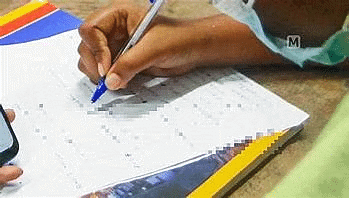
Why in news?
A seven-member high-level committee was constituted under the chairmanship of K. Radhakrishnan, former ISRO Chairman, by the Ministry of Education to reform the National Testing Agency (NTA).
About National Testing Agency (NTA)
- NTA is a premier, specialist, autonomous, and self-sustained testing organization conducting entrance examinations for admission/fellowship in higher educational institutions.
- It was established in 2017 with a grant amount of Rs.25 crore from the Union Government.
- NTA is responsible for conducting exams such as:
- Joint Entrance Examination - Main (JEE Main)
- National Eligibility cum Entrance Test-Undergraduate (NEET-UG) as well as NEET PG
- National Eligibility Test (NET)
- Common Management Admission Test (CMAT)
- Graduate Pharmacy Aptitude Test (GPAT)
- The NTA is chaired by an eminent educationist appointed by the Ministry of Education.
- There will be a Board of Governors comprising members from user institutions.
National Testing Agency (NTA) Under Scrutiny
- The NTA has been criticized after the NEET paper leak controversy and the subsequent scrapping of exams like UGC-NET due to "lack of integrity."
- The committee aims to establish a robust process for conducting various entrance examinations end to end.
NTA Reform Panel: Committee Composition
- Committee Head: K. Radhakrishnan, former Chairman of ISRO and Chairman of the Board of Governors at IIT-Kanpur.
- Two-Month Timeline: The committee aims to meet ten times over the next two months to develop comprehensive recommendations.
Key Issues and Focus Areas
- Data Security Protocol: Developing a manual to fix a data security protocol to prevent question paper leaks.
- Printing and Process Integrity: Reviewing processes for printing question papers, onboarding printers, and training staff to minimize external participation.
- Organisational Restructuring: Considering adding a data security vertical in the NTA organogram and implementing transparent processes, requiring organizational restructuring.
- Examination Investigation and Security:
- Root Cause Analysis: Investigating the initial cause of question paper leaks to identify and plug gaps.
- Modes of Examination: Examining different modes of conducting examinations.
Challenges faced by NTA
- Infrastructure Limitations: Currently, India lacks the infrastructure to conduct computer-based tests online for more than three lakh students simultaneously.
- Large-Scale Exams: NEET-UG involves up to 24 lakh students appearing in pen and paper OMR mode at once.
Conclusion
- The reforms are critical to restoring the integrity of entrance examinations in India, ensuring secure and fair testing processes.
- The committee's recommendations will play a pivotal role in shaping the future operations of the NTA and entrance examination protocols.
Back2Basic: University Grants Commission (UGC)
Details
- Establishment: Came into existence on 28th December, 1953.
- Legislation: The UGC Act, 1956.
Nodal Ministry
- Ministry of Human Resource Development (now Ministry of Education).
Responsibilities
- Providing funds to universities and colleges.
- Promoting and coordinating university education.
Unique Distinction
- Only grant-giving agency in India with the dual role of funding and maintaining standards in higher education institutions.
Functions
- Link Role: Acts as a vital link between Union and State governments and institutions of higher learning.
- Advisory Role: Advises the Central and State governments on necessary measures for the improvement of university education.
GS3/Economy
Finance Commission and Indian cities
Source: Mint
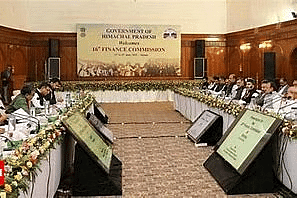
Why in news?
With the new Lok Sabha and Union government in place, this final piece focuses on how the 16th Finance Commission can drive substantive public finance reforms for India's cities.
Note:
The Sixteenth Finance Commission has been requested to make its recommendations available by October 31, 2025, covering an award period of 5 years commencing 1st April, 2026.
Strengthening State Finance Commissions:
- The Commission should emphasize the need for state governments to constitute state finance commissions on time, provide them with adequate resources, and ensure their recommendations are taken seriously.
Fiscal Decentralization:
- The 16th FC should recommend a formula-based approach for predictable fiscal transfers from state governments to municipalities, moving away from the current practice of ad hoc, discretionary grants. This will enhance the financial autonomy of urban local bodies.
Revenue Optimization:
- The Commission should incentivize municipalities to enhance their own revenues through measures like property tax reforms, user charges, and leveraging land assets. This will reduce their dependence on state grants and promote fiscal responsibility.
Fiscal Responsibility and Budget Management:
- The 16th FC can provide incentives for municipalities to adopt fiscal responsibility and budget management frameworks to accelerate municipal borrowings for infrastructure development. This will enable cities to access capital markets for financing their growth.
Transparency and Citizen Participation:
- The 16th FC can encourage municipalities to enhance transparency and citizen participation in urban governance for improved accountability at the neighbourhood level. This will make urban local bodies more responsive to the needs of citizens.
Need for the Reforms
- Inadequate Funding and Resource Utilization: Indian cities face significant financial shortfalls and struggle to effectively utilize the funds they have, leading to underdeveloped infrastructure and services.
- Lack of Accountability: There is minimal accountability regarding how municipal spending improves citizens' lives, resulting in inefficient use of resources and unmet public needs.
- Cities need predictable fiscal transfers for effective planning, but state governments often delay constituting State Finance Commissions (SFCs) and implementing their recommendations.
- Cities underutilize their revenue-generating powers due to outdated valuation processes controlled by state governments. Comprehensive reforms are needed at all stages of revenue collection.
Transparency and Fiscal Responsibility:
- Activities by State Governments
- Timely Constitution and Implementation of State Finance Commissions: State governments must ensure the timely establishment and effective implementation of SFC recommendations to support fiscal decentralization and provide predictable funding to cities.
- Updating Valuation Processes: States should regularly update guidance values or circle rates to reflect current market values, enabling cities to optimize revenue collection and ensure financial sustainability.
- Enhancing Legal and Institutional Frameworks: States should establish and enforce standardized formats for financial accounting, reporting, and budgeting to ensure consistency, transparency, and comparability across municipalities.
- Empowering Local Governments: States should delegate reasonable expenditure authority to city councils, reducing dependency on state-level approvals and enabling more efficient and responsive local governance.
- Mandating Transparency and Citizen Participation: States should mandate public disclosure of municipal financial data and project details in machine-readable formats and support the implementation of participatory budgeting to enhance transparency and citizen involvement in governance.
Conclusion:
- The 16th Finance Commission can drive critical municipal-level financial reforms by strengthening state finance commissions, promoting fiscal decentralization, optimizing revenues, enhancing fiscal responsibility, and encouraging transparency and citizen participation in governance.
Mains PYQ:
How is the Finance Commission of India constituted? What do you know about the terms of reference of the recently constituted Finance Commission? Discuss. (15) (UPSC IAS/2018)
GS3/Economy
Power markets in India: their working, advantages, and the road ahead
Source: Indian Express

Why in news?
Amid increasing summer demand, the government has allowed the trading of surplus electricity generated from "linkage coal" within the country's power markets.
What is the Power Market?
- A power market serves as a platform for buying and selling electricity, facilitating trade between generators and consumers based on market-driven prices and conditions.
Types of Markets related to Power exchanges in India include:
Spot Markets:
- Real-time markets (RTM) enable immediate buying and selling of electricity.
- Day-ahead markets (DAM) involve bidding for electricity to be delivered the next day.
Term-Ahead Markets:
- These markets support trades for longer durations, offering more certainty and planning for market participants.
Their working and Power exchanges in India
Market Operation:
- Power exchanges in India function as platforms where electricity generators (sellers) and consumers (buyers) engage in trading.
- Generators submit offers indicating the quantity of electricity they can supply at various prices, while buyers submit bids indicating the quantity they wish to purchase at various prices.
Renewable Energy Certificates (REC):
- Power exchanges also oversee the trading of Renewable Energy Certificates (RECs) which represent the environmental attributes of renewable electricity generated.
- RECs can be sold to utilities to fulfill their renewable purchase obligations (RPOs).
Regulation:
- Power exchanges are regulated by the Central Electricity Regulatory Commission (CERC) in India, ensuring fair and transparent trading practices.
- The regulatory framework oversees market operations and sets rules to uphold market integrity.
Market Dominance:
- The Indian Energy Exchange (IEX) holds a prominent position in India's power exchange market, managing the majority of electricity trading volume.
- Other exchanges like Power Exchange India Limited (PXIL) and Hindustan Power Exchange Ltd (HPX) exist, but IEX dominates with over 90% market share.
Their advantages
- Flexibility: Facilitates quick response by generators to fluctuating electricity demand, allowing surplus power to be sold at market-driven prices, thereby enhancing grid stability.
- Efficiency: Optimizes the utilization of coal-based power generation assets, minimizing wastage and maximizing revenue through market-based transactions.
- Transparency: Promotes transparent pricing mechanisms in the electricity sector, fostering competitive market dynamics and potentially lowering electricity costs for consumers.
The Road Ahead for Power Exchanges
- Market Coupling:
- Matches bids from different power exchanges to determine a uniform market clearing price, enhancing efficiency and reducing price disparities across regions.
- Enhances price discovery, market stability, and regional grid integration, providing a reliable reference price for policymakers.
- Capacity Markets:
- Compensates generators for maintaining available capacity, incentivizing investments in reliable generation infrastructure.
- Ensures long-term grid reliability, particularly during peak demand periods, aligning India's power market with global standards and attracting investments.
- International Alignment and Competitiveness:
- India's adoption of advanced market structures aims to align with mature international markets, fostering increased competition, investments, and enhancing sector efficiency and reliability.
|
39 videos|4566 docs|979 tests
|
FAQs on UPSC Daily Current Affairs- 25th June 2024 - Current Affairs & Hindu Analysis: Daily, Weekly & Monthly
| 1. What is the significance of Srinagar receiving the tag of World Craft City? |  |
| 2. How many new critical mineral blocks has the government offered, and what is their importance? |  |
| 3. What is the mega Island Project being carried out in Great Nicobar by NITI Aayog? |  |
| 4. How has the amendment to Maternity Leave Rules impacted surrogacy in India? |  |
| 5. How has the Panchayats (Extension to Scheduled Areas) Act boosted forest conservation in India? |  |




























